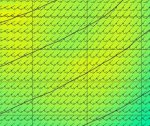Birdseye
Well-known member
Agree wholeheartedly with that one. Its a fault of most public published numerical data that rarely if ever are accuracies indicated. Problem is of course that Joe Public usually doesnt know a standard deviation from a sexual deviation


